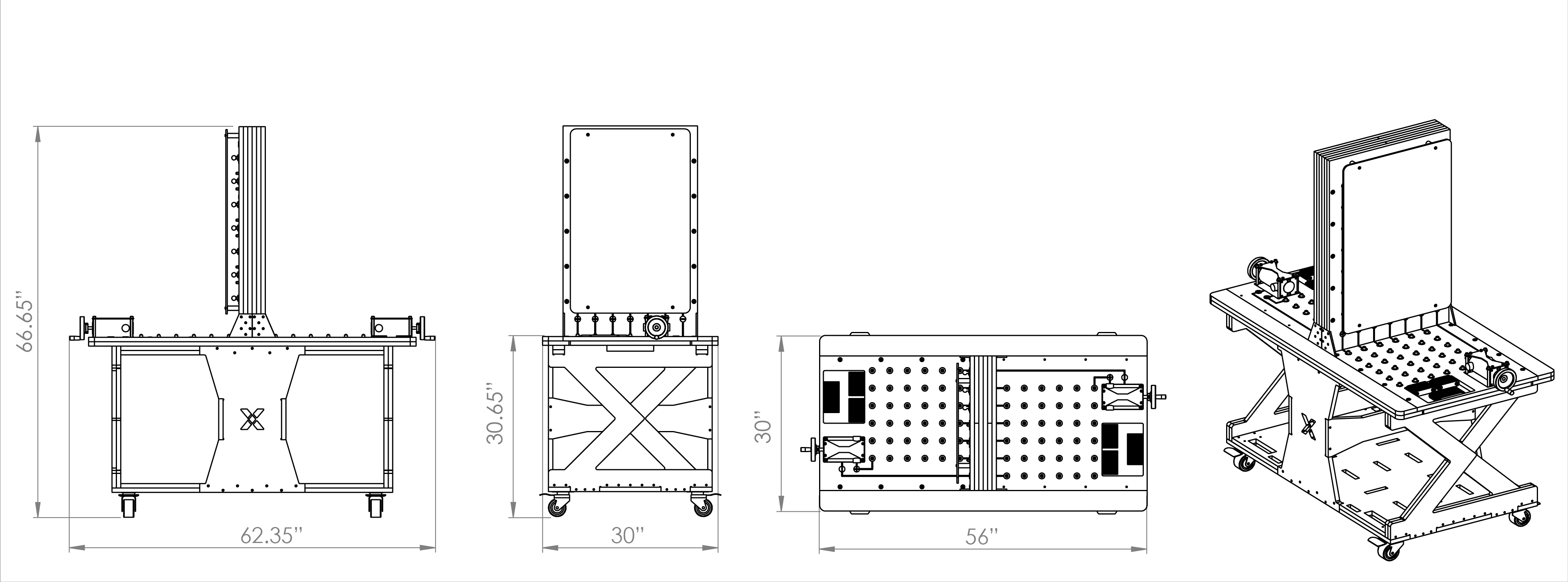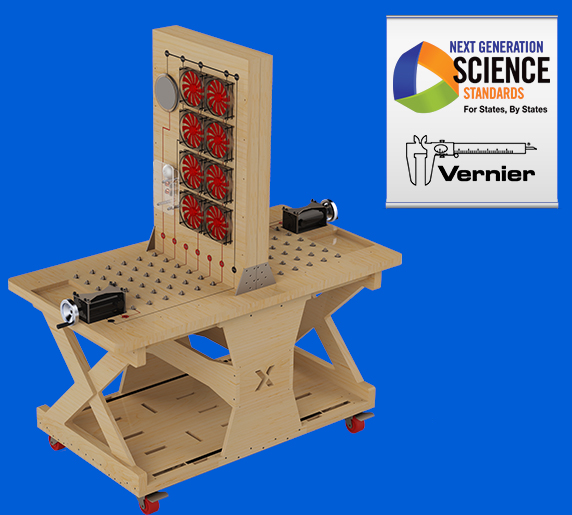STEM Concepts Learned from Use of Circuit Bench FLEXCART: Grade Bands 3-5
Physics of Electricity:
Students will be introduced to electricity as a flow of electrons and will learn about types of circuits, conductors, and insulators through this lens.
Physics of Energy:
Students will learn about energy movement, storage, and transformation by turning a crank to generate electricity to power devices on the circuit bench.
Models:
Students will use the Circuit Bench FLEXCART model, a form of exhibit technology, to explain real phenomena and relationships in circuits and electrical grids. Students will use data and observations to evaluate the effectiveness of the model.
Social/Environmental Connections:
Students will learn about ways our society generates the electricity that we use every day and the benefits and downsides of various generation methods.
Engineering Concepts:
Students will test various materials as to use as conductors on the circuit bench and in their own circuits. Students will design circuits to power multiple light bulbs using their data from previous investigations.
Math Calculations:
Older students can calculate electricity usage in kWh for their homes or schools.
Computer Science:
Students will program an “algorithm” (a set of steps that when followed accomplish the same big picture task each time) by recording the directions for the circuit they create on the base. They will then exchange them with another student to follow, the goal being to accomplish the same activation as the original “programmer".
Vernier Technology:
The Vernier Go Direct® Voltage Probe and the Vernier Go Direct® Current Probe. can be purchased separately from Vernier.com and work well with the Circuit Bench. They can each be used alone or in conjunction for even better data acquisition
STEM Careers associated with the Circuit Bench Unit Plan:
- Electrical Engineer
- Electrical Technician
- Electronic Technologist
- Electrician
- Electromechanical Engineer
- Electronic Engineer
- Wind Energy Engineers
- Solar Voltaic Installers
Circuit Bench FLEXCART Specs:


